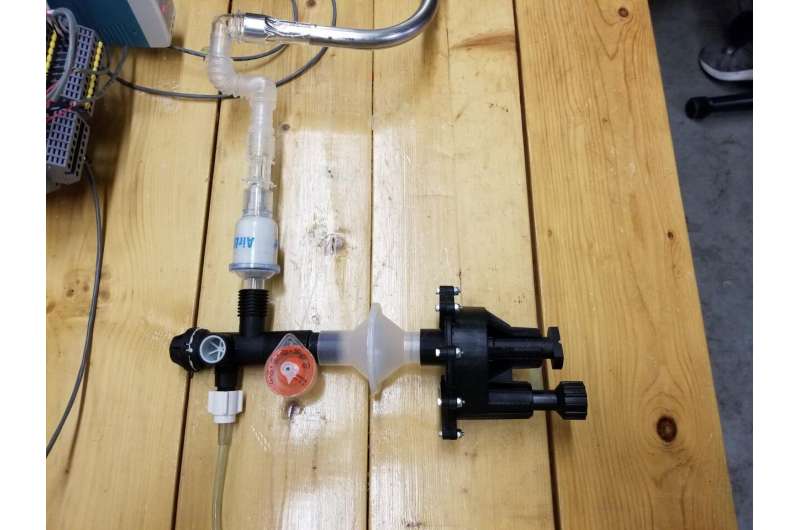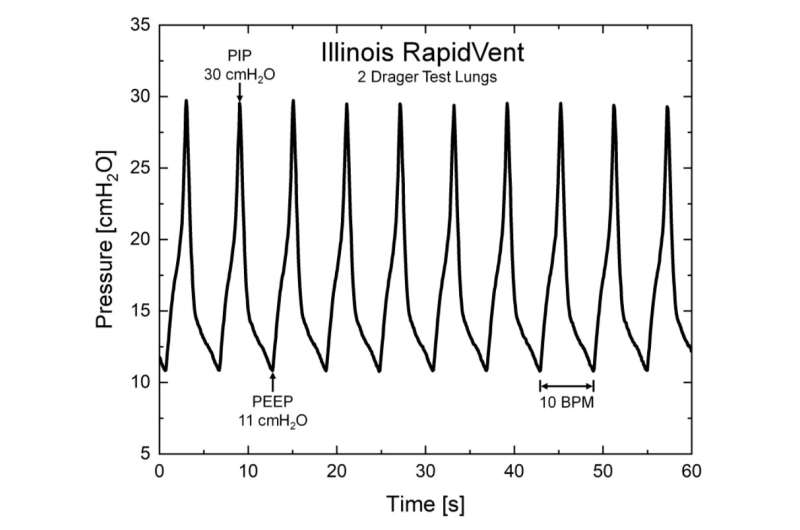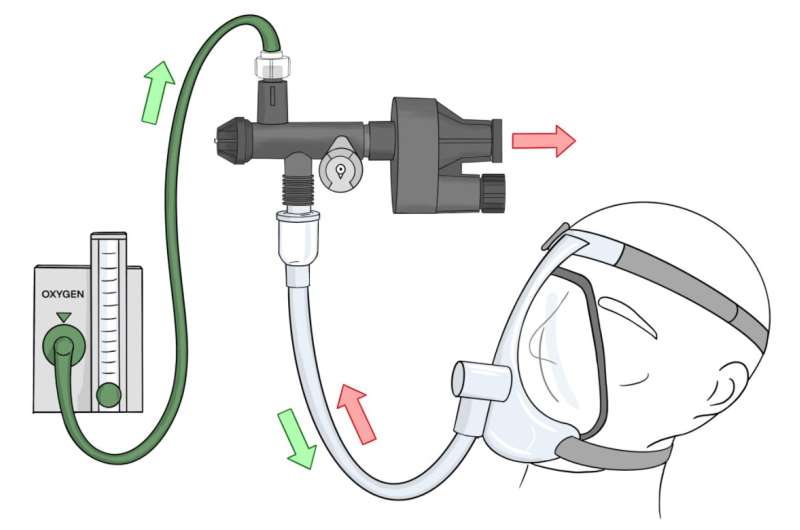Team demonstrates working prototype of emergency vent

A team led by the University of Illinois at Urbana-Champaign's Grainger College of Engineering and Carle Health has produced a prototype emergency ventilator to help address the expected surge in the need for respiratory care associated with the COVID-19 pandemic.
"Our team is living the Apollo 13 movie," said William King, the overall project leader. "We have dropped everything else to work around the clock to help respond to the COVID-19 crisis." King is a Professor of Mechanical Science and Engineering who holds appointments in The Grainger College of Engineering and the Carle Illinois College of Medicine.
"We have a team of brilliant and dedicated people that made something that actually works in less than one week. It's very inspiring. We hope that we can engage even more people to work on the global response to COVID-19 as we continue to develop the prototype."
The Illinois RapidVent, as the emergency ventilator is known, would plug into the oxygen source available in most hospital rooms or could plug into a tank of oxygen. The prototype has run for more than 75 hours, which is more than 125,000 breathing cycles. Over this time, the device delivered the amount of oxygen necessary and the pressure that patients would need when they are unable to breathe well enough on their own. So far, focused testing in the laboratory shows equivalent performance to commercial products—which are in very short supply.
Partners in the Illinois RapidVent project include faculty and researchers from across the University of Illinois at Urbana-Champaign, its Grainger College of Engineering, its Siebel Center for Design, its Applied Research Institute, Carle Health, Tekmill, and Creative Thermal Solutions, Inc.

The team is collaborating with doctors and medical professionals on an ongoing basis to refine the design and make usability improvements—based on an evaluation of about a half-dozen existing products. A prototype was created using high-end additive manufacturing equipment and then tested at the University of Illinois and at Creative Thermal Solutions, a Champaign, Illinois-based company. Team members are also examining necessary approvals for using the emergency ventilator.
The next step will be identifying partners and resources to produce the Illinois RapidVent at scale.
"Healthcare providers must always adjust to address patient needs. We're using resources available and seeking supplies. We recognize that we must also think differently to care for patients in the future. We believe bringing physicians, engineers and other partners together is critical to advancing care," said Charles Dennis, MD, Carle Chief Medical Officer.
"This Coronavirus can impact a patient's lungs, and those who are sickest may need help breathing," said Karen White, MD, Ph.D., an intensivist at Carle Foundation Hospital and a faculty member in the Carle Illinois College of Medicine. "Ventilators are necessary to help patients get more oxygen. That's why we're optimistic that by further developing the Illinois RapidVent we can develop more options for our sickest patients."
The team draws together engineers, doctors, medical professionals, designers, user-experience experts, and manufacturing experts from industry. More than 40 people have been at work day and night on the project since it launched on March 16, 2020.

"We've all seen the 'flatten the curve' graphics that illustrate how staying at home helps reduce the threat of hospitals being overwhelmed. That behavior is absolutely crucial, but, in many projections, hospitals throughout the country may still have four or five times fewer ventilators than they need," said Rashid Bashir, Dean of The Grainger College of Engineering and a Professor of Bioengineering. Bashir is also affiliated with the Carle Illinois College of Medicine.
"We saw this massive, urgent need, and our partners from across the state jumped on it. This is precisely what America's research universities and their partners are uniquely equipped to do."
While a few small groups have met in person to test devices, the team is respecting social distancing and has met almost exclusively over video conference.
"It is very likely that hospitals around the country are going to need extra ventilator capacity, and we're proud to be striving to address that need," King said.
More information: Find out more about the prototype at rapidvent.grainger.illinois.edu .




















